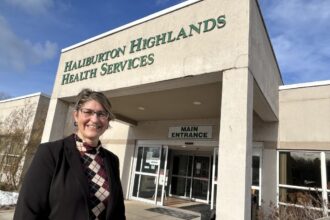As Canada braces for another potentially severe wildfire season, millions of Canadians are facing a silent, pervasive threat that hangs in the air. The acrid smell of smoke has become an unwelcome harbinger of summer in many parts of the country, with last year’s unprecedented fire season still fresh in our collective memory.
“What we experienced in 2023 was nothing short of extraordinary,” says Dr. Sarah Cooke, respiratory specialist at Toronto General Hospital. “Air quality readings in major cities reached levels we typically associate with the most polluted urban centers globally, and we’re still analyzing the long-term health impacts.”
The health risks associated with wildfire smoke are substantial and wide-ranging. Fine particulate matter, known as PM2.5, can penetrate deep into the lungs and even enter the bloodstream, causing both immediate and chronic health problems. According to Health Canada data, these microscopic particles are linked to increased emergency room visits for respiratory and cardiovascular conditions during smoke events.
Those with pre-existing conditions face heightened risks. Asthma, chronic obstructive pulmonary disease (COPD), and heart disease patients often experience exacerbated symptoms during smoke events. Children, pregnant women, and the elderly are particularly vulnerable due to their developing or compromised respiratory systems.
“We saw a 30% increase in emergency department visits for asthma and COPD during the peak smoke days last summer in British Columbia,” notes Dr. Michael Chen, emergency physician at Vancouver General Hospital. “Many patients reported that even their regular medications weren’t providing adequate relief.”
The psychological impact of persistent smoke should not be underestimated either. Extended periods of poor air quality can force people indoors, limiting physical activity and social interaction. This isolation, combined with anxiety about health risks and climate change, contributes to increased reports of mental health challenges in affected communities.
Indigenous communities across Canada often bear a disproportionate burden from wildfires, with many First Nations territories located in fire-prone boreal forest regions. These communities frequently face evacuation orders, displacement, and heightened exposure to smoke, compounding existing health inequities.
Protecting yourself requires vigilance and preparation. Health experts recommend creating clean air spaces within homes by using HEPA air purifiers or constructing DIY versions with box fans and furnace filters. When venturing outdoors during smoke events, N95 or KN95 masks provide better protection than cloth or surgical masks, as they can filter out fine particulate matter.
“It’s critical to monitor air quality indices and adjust your activities accordingly,” advises Dr. Cooke. “Exercise should be moved indoors or postponed when air quality deteriorates, particularly for sensitive populations.”
Government agencies across Canada have expanded air quality monitoring networks and improved public communication systems following recent severe fire seasons. The FireSmart Canada program provides communities with resources to reduce wildfire risks, while researchers continue to study the relationship between climate change and increasing wildfire intensity.
Climate scientists warn that as global temperatures rise, the conditions that fuel severe wildfire seasons—drought, heat waves, and lightning storms—are becoming more common across the Canadian landscape. The boreal forest, which stretches across much of northern Canada, is warming at nearly twice the global average rate.
“What we’re experiencing isn’t simply a series of bad years—it’s the new reality of our changing climate,” explains Dr. Warren Smith, climatologist at the University of British Columbia. “Communities need to adapt not just for this summer, but for decades to come.”
As Canadians prepare for potential smoke events this summer, the conversation extends beyond immediate health protection to broader questions about climate resilience and adaptation. How will our healthcare systems, urban planning, and emergency response protocols evolve to address this growing public health challenge in a warming world?


















